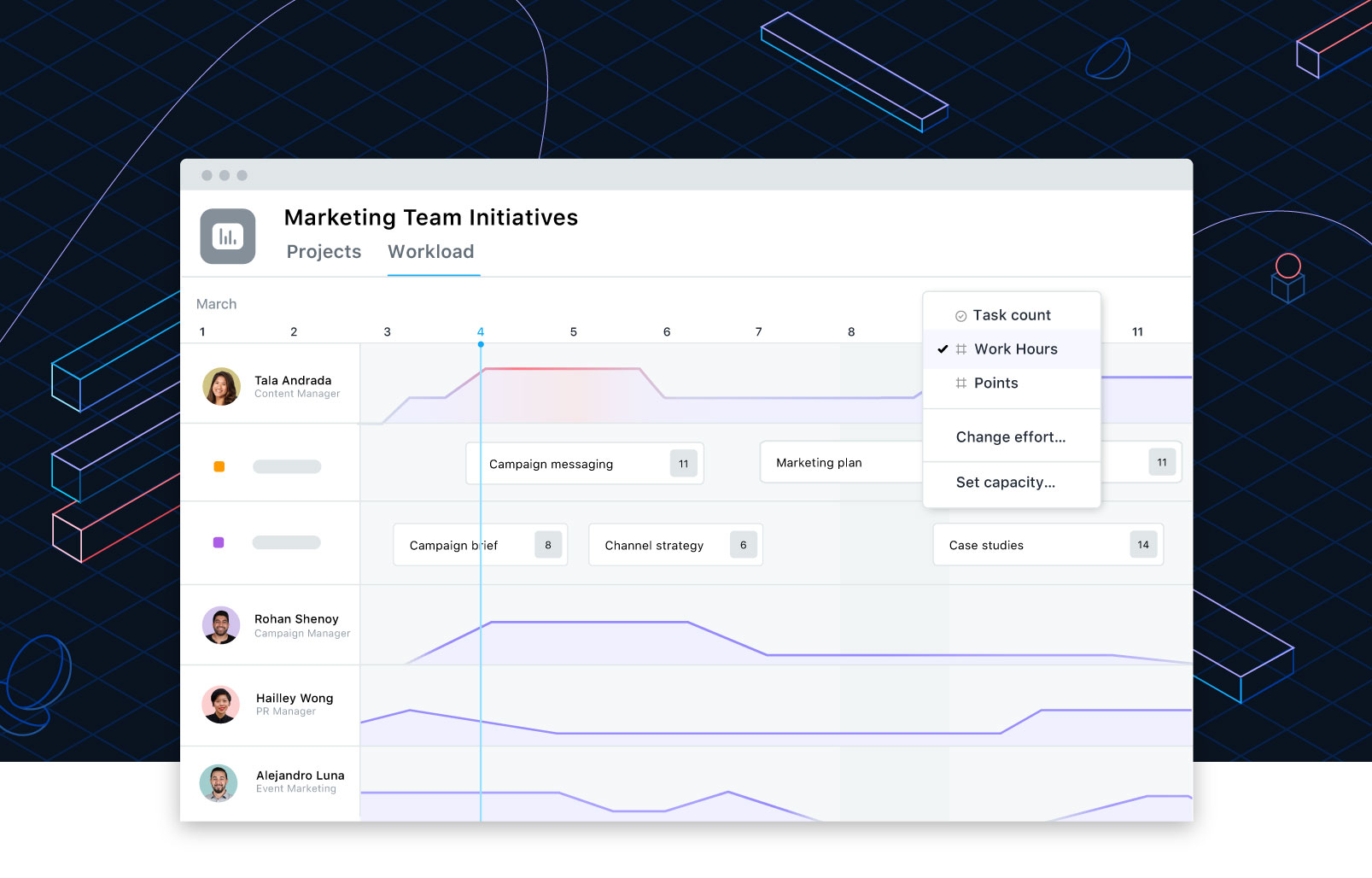Asana, the work management platform led by Facebook co-founder Dustin Moskovitz, today launched Workload, a new feature for its paying users that aims to help prevent burnout. It does so by making it easier for businesses to fairly distribute work across their teams and, if necessary, redistribute it.
“The most productive and happiest teams are those that have clarity of who is doing what by when,” said Alex Hood, the head of Product at Asana . “While today’s workplace has more ways to communicate and collaborate than ever before, the majority of teams are still turning to outdated spreadsheets and email chains to plan and manage work.”
The general idea behind Workload is that it provides a central view of how much more work any given team can currently handle. Team members can customize their own workload based on criteria like points or hours and, maybe most importantly, set capacity limits.
One of the first companies to test Workload was fast-casual food chain Panera. “Panera’s creative team averages 45 projects a week, and before Workload, we didn’t have a simplified way to review the team’s bandwidth,” said Jenny Williams, Marketing Traffic manager at Panera Bread. “With Workload, we can easily see assigned tasks and react to bandwidth concerns by negotiating deadlines and, if needed, make a case for additional resources.”
The general ideas behind all of these tools always sound good, of course. It’s no secret that burnout is a major problem and, according to Asana’s own research, 80% of global knowledge workers say they consistently feel overworked and close to burnout. I would take those results with a grain of salt, though, given that few people are going to say that they are barely doing anything — even if they are and their colleagues consistently wonder what they are doing all day. Still, anything that helps to bring down the actual number of burned-out workers is a good thing.
